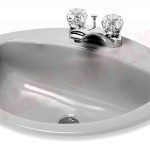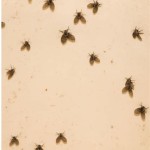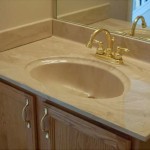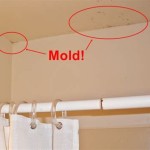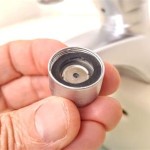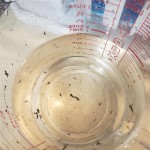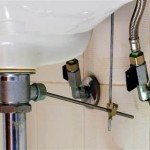DIY Bathroom Vanity Transformation with Contact Paper
Bathroom vanities, frequently subjected to moisture and daily use, can quickly show signs of wear and tear. Replacing an entire vanity can be expensive and disruptive. An alternative, cost-effective method for revitalizing a tired bathroom vanity involves the application of contact paper. This project offers a relatively simple and affordable solution, allowing for a significant aesthetic improvement with minimal financial investment and effort.
Contact paper, also known as shelf liner, is a self-adhesive decorative paper typically made from vinyl or a similar plastic material. It comes in a vast array of colors, patterns, and textures, including realistic imitations of wood, marble, and granite. Its application to a bathroom vanity can transform its appearance, covering imperfections and providing a fresh, updated look.
The following outlines the process of using contact paper to transform a bathroom vanity, detailing the necessary materials, preparation steps, application techniques, and troubleshooting tips.
Materials Required
Successfully completing a contact paper vanity transformation requires gathering the appropriate tools and materials. Having everything prepared beforehand streamlines the process and minimizes potential interruptions.
Firstly, sufficient contact paper is essential. Accurately measuring the vanity's surfaces to be covered is crucial for determining the required quantity. It is always advisable to purchase slightly more contact paper than calculated to account for mistakes, overlaps, or future repairs. The type of contact paper chosen can vary depending on the desired aesthetic and functional requirements. Thicker, more durable options may be preferable for high-traffic areas or surfaces prone to moisture exposure. Consider water-resistant or waterproof varieties specifically designed for bathrooms to extend the lifespan of the application.
A sharp utility knife or craft knife is indispensable for precise cutting and trimming of the contact paper. Ensure the blade is sharp to achieve clean edges and prevent tearing. A dull blade can result in ragged cuts and an unprofessional finish. Replacing the blade regularly throughout the project is recommended to maintain optimal cutting performance.
A smoothing tool, such as a plastic smoother, a squeegee, or even a credit card, is necessary for removing air bubbles and ensuring smooth adhesion of the contact paper to the vanity surface. A soft cloth wrapped around the smoothing tool can prevent scratching the contact paper's surface, particularly when working with delicate or textured materials.
A measuring tape or ruler is vital for accurate measurements and precise cutting. Ensuring accurate measurements is critical for achieving a professional-looking result and minimizing waste. A metal ruler is generally more durable and provides a straighter edge than a plastic ruler.
Isopropyl alcohol or a similar degreasing cleaner is required to thoroughly clean the vanity surface prior to application. Removing any dirt, grease, or grime is essential for ensuring proper adhesion of the contact paper. A clean, dry surface provides a strong foundation for the contact paper and prevents it from lifting or peeling prematurely.
A soft, lint-free cloth is used for cleaning the vanity surface and wiping away any excess cleaning solution. A microfiber cloth is an excellent choice as it is highly absorbent and minimizes lint residue. Avoid using abrasive cleaners or cloths that could scratch the vanity's surface.
Vanity Preparation
Proper preparation of the vanity is paramount for achieving a successful and long-lasting contact paper application. Neglecting this step can result in poor adhesion, air bubbles, and premature peeling.
The initial step involves thoroughly cleaning the vanity surface. Use a degreasing cleaner, such as isopropyl alcohol or a bathroom-specific cleaner, to remove any dirt, grease, soap scum, or other residues. Pay particular attention to areas around handles, edges, and corners, where grime tends to accumulate. After cleaning, thoroughly dry the surface with a clean, lint-free cloth. Ensure there is no moisture remaining before proceeding to the next step.
If the vanity surface has any imperfections, such as chips, cracks, or peeling paint, it may be necessary to repair them before applying the contact paper. Fill any holes or cracks with wood filler or spackle, allow it to dry completely according to the manufacturer's instructions, and then sand it smooth. Sanding smooths out uneven surfaces, providing a more even foundation for the contact paper and preventing imperfections from showing through the adhesive.
Remove all hardware from the vanity, including handles, knobs, and drawer pulls. This allows for easier application of the contact paper and ensures a cleaner, more professional finish. Store the hardware in a safe place to prevent loss or damage. If the hardware is also in need of updating, consider replacing it with new hardware after the contact paper application is complete.
For vanities with intricate molding or detailing, consider using a heat gun or hairdryer to soften the contact paper and make it more pliable. This allows the contact paper to conform to the contours of the molding and prevent air bubbles or wrinkles from forming. Apply heat sparingly and avoid overheating the contact paper, as this could damage the adhesive or the material itself. Test the heat on a small, inconspicuous area first to ensure it does not discolor or warp the contact paper.
Contact Paper Application Techniques
The application of contact paper requires patience and precision to achieve a smooth, seamless finish. Rushing the process can result in air bubbles, wrinkles, and misaligned edges.
Begin by measuring and cutting the contact paper to the appropriate size for each section of the vanity. Add a slight overlap of approximately one inch on all sides to allow for trimming and adjustments. It is generally easier to work with smaller sections of contact paper, especially for complex shapes or curved surfaces. Use a sharp utility knife or craft knife and a metal ruler for accurate and clean cuts. Cutting along a straight edge ensures a professional-looking finish.
Peel back a small portion of the contact paper's backing, exposing the adhesive. Align the exposed adhesive portion with the edge of the vanity surface and gently press it into place. Use a smoothing tool, such as a plastic smoother or squeegee, to gradually smooth the contact paper onto the surface, working from the center outwards. This helps to prevent air bubbles from forming and ensures uniform adhesion. Apply consistent pressure with the smoothing tool to eliminate any wrinkles or creases.
As you continue to peel away the backing and smooth the contact paper, be mindful of air bubbles. If air bubbles do form, use a pin or the tip of a utility knife to create a small puncture in the bubble. Then, gently press the air out with the smoothing tool. Avoid creating large punctures, as these can be visible and detract from the overall appearance. Work slowly and methodically to minimize the formation of air bubbles.
Once the contact paper is fully applied to a section, use a sharp utility knife or craft knife to trim the excess material along the edges. Use a metal ruler as a guide for straight cuts. Ensure the cuts are clean and precise for a professional finish. If there are any overlaps, carefully overlap and trim the contact paper so that the seam is barely visible. Use a smoothing tool to press down the edges of the trimmed contact paper to ensure a secure bond.
For corners and edges, consider using a heat gun or hairdryer to soften the contact paper and make it more pliable. This allows the contact paper to conform to the shape of the corner or edge and prevents it from lifting or peeling. Apply heat sparingly and avoid overheating the contact paper. Once the contact paper is softened, use a smoothing tool to press it firmly into place. Trim any excess material with a sharp utility knife or craft knife.
After applying contact paper to all the desired surfaces, carefully inspect the vanity for any imperfections, such as air bubbles, wrinkles, or misaligned edges. Use a pin or utility knife to address any air bubbles, and carefully smooth out any wrinkles or creases. If necessary, re-trim any edges to ensure a clean, professional finish. Once you are satisfied with the results, allow the contact paper to fully cure for at least 24 hours before reinstalling the hardware.
Reinstall the previously removed hardware, such as handles, knobs, and drawer pulls. This completes the transformation of the bathroom vanity. Ensure the hardware is securely fastened and properly aligned.

Diy Easy Bathroom Makeover Transformation Faux Marble Framed Mirror No Paint The Ann

Marble Contact Paper Countertop 10 Months Later Anika S Diy Life

Diy Bathroom Makeover Contact Paper How To Tips

Contact Paper Counter Makeover Before After Realistic Marble

Diy Bathroom Vanity Renovation Contact Paper

Marble Contact Paper Countertop 10 Months Later Anika S Diy Life

Glam Bathroom Diy Makeover Ideas How To Use Contact Paper On Countertop

How To Do A Sy Stunning Granite Contact Paper Countertop Makeover Craft Your Happiness

Diy Faux Marble Contact Paper Countertop Anika S Life

27 Fab Ways To Decorate Your Home With Contact Paper Ideas For Every Room Life S Ahmazing
Related Posts
